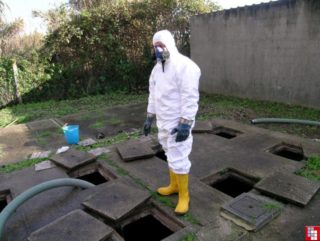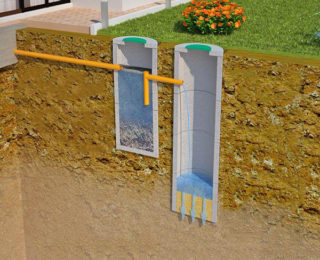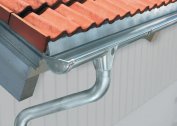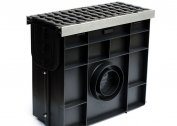Private houses that are not connected to the sewage system use pits for collecting wastewater. Periodically, containers are filled with waste products and various sewage. The bacteria contained in the effluent partially absorb the accumulation, while the filtered part of the contaminants passes into the underlying soil layer. Untreated waste should be disposed of regularly.
When to clean a pit
 During operation of the cesspool, it forms waste in the liquid state, as well as in the form of fat deposits that remain on the walls of the well. At the same time, they complicate the cleaning of the tank and accelerate its filling. The accumulation of household chemicals, food waste and feces causes harm to people living in the house and the natural environment.
During operation of the cesspool, it forms waste in the liquid state, as well as in the form of fat deposits that remain on the walls of the well. At the same time, they complicate the cleaning of the tank and accelerate its filling. The accumulation of household chemicals, food waste and feces causes harm to people living in the house and the natural environment.
Based on the presence of some factors, there is a need for cleaning:
- the presence of a bad smell;
- layering of silt at the bottom of the well;
- accumulation of insects over the drain hole;
- slow outflow in plumbing fixtures connected to a waste pit.
The cesspool is up to 2 cubic meters in size. cleaned once every few years. Moreover, prevention methods also reduce the need for cleaning agents.
Non-pumping cleaning methods
The easiest way is to call the scavengers, but it is not always possible for the bulky device to approach the well. It can be difficult to pump out on your own, as you will have to look for a place to discharge the waste. In addition, silty deposits accumulate on the walls of the tanks, which also need to be removed.
Other methods to get rid of sewage come to the rescue:
- with the use of chemicals;
- using biological substances;
- using folk methods.
Each of the methods has its advantages and disadvantages. The choice of means and method for emptying the cesspool from sewage depends on the owners of the site.
Chemicals
 Cleaning with the help of chemistry has some advantages, because the drugs are able to fight pollution at any temperature in various liquids with impurities. Nevertheless, their use may adversely affect the operation of the sewage system and the state of the environment.
Cleaning with the help of chemistry has some advantages, because the drugs are able to fight pollution at any temperature in various liquids with impurities. Nevertheless, their use may adversely affect the operation of the sewage system and the state of the environment.
Chemicals work on the principle of interaction between the contents of the waste tank and the reagent. The result of the work is the formation of organic compounds. However, this simple method is not the safest for residents. Previously, quicklime and a formaldehyde solution were used to treat wastewater. Now they are banned, and instead they use modern drugs that are relatively safe.
They can be divided into several categories based on the chemical composition:
- Ammonium. Drugs are inexpensive, but still quite toxic. Not recommended for use in metal containers in order to avoid destruction of the material. Ammonium compounds do an excellent job of eliminating excrement and decomposing waste, while removing odors. The disadvantage of drugs is the inability to work in the presence of detergents in the drains, and also ineffective in an aggressive environment.
- Nitrogen. Environmentally friendly and safe preparations based on surface-active elements that thin the waste. The effect of drugs does not decrease in the presence of organic waste and household chemicals. At the same time, nitrogen compounds remove unpleasant odors and kill harmful insects.
- Acidic. Preparations are used for cleaning metal containers, decomposition of sludge masses, plastic and solid waste.When working, they destroy insect pests and bacteria, and also fight stench.
Chemicals are used mainly in winter and autumn, since the reagents can withstand low temperatures. Substances are sold in the form of liquids, various tablets, powders, and different granule sizes. Liquid and tableted preparations are added to cesspools, and powders are diluted with water and poured into the drain of sanitary equipment.
Biological preparations
 Cleaning agents can be divided into two categories: antiseptics and septic tanks. The composition of biological preparations is distinguished by the presence of microorganisms, which are capable of decomposing any waste material into sludge and water. The use of biological products will not be able to replace the mechanical treatment of wastewater, however, it will significantly reduce the rate of filling with sewage.
Cleaning agents can be divided into two categories: antiseptics and septic tanks. The composition of biological preparations is distinguished by the presence of microorganisms, which are capable of decomposing any waste material into sludge and water. The use of biological products will not be able to replace the mechanical treatment of wastewater, however, it will significantly reduce the rate of filling with sewage.
The bacteria that make up the preparations are anaerobic and aerobic. The first are used in closed containers, bacteria carry out their work inside the waste collection. While aerobic oxygen is needed, they act on the surface of the cesspool. The drugs work at a temperature of 5 to 30aboutC, respectively, they are used only in spring or summer.
At elevated ambient temperatures, the drug container needs shading. This is done so that the active colony of bacteria does not die. The disadvantage of this cleaning method is the inefficiency of bacteria in the presence of household chemicals and chlorine in the effluent. In addition, biological products must be periodically added to wastewater.
Folk methods
Some owners use folk methods to deal with sewage. Nettles and tomatoes, as well as sawdust are added to cesspools. Peat and sawdust are able to absorb the liquid part of the wastewater, however, the tanks still need to be mechanically cleaned of accumulations. The tops of plants fights the appearance of an unpleasant odor, but is not able to destroy waste.
Prevention to reduce pit cleanings
 To reduce the number of cleanings, preventive measures are applied at the stage of building a house and a sewage device. If no action has been taken, the old tank can be reorganized. At the same time, build a septic tank with an overflow, which consists of two containers: one is sealed, the second is permeable.
To reduce the number of cleanings, preventive measures are applied at the stage of building a house and a sewage device. If no action has been taken, the old tank can be reorganized. At the same time, build a septic tank with an overflow, which consists of two containers: one is sealed, the second is permeable.
This method of the device eliminates siltation, and mechanical cleaning is very rare. In addition, the effect of a variety of drugs in such containers is enhanced by the technology of the septic tank. An important factor is the correct installation of thermal insulation of cesspools and sewers. This will help protect the discharge pipes from damage by frozen waste.
It is not possible to completely abandon mechanical cleaning. Because waste products will still accumulate, and they must be removed from the sewage pit. The use of chemical and biological agents will definitely reduce the number of procedures, and also increase the life of the septic tank or pit.
Conclusion
Cleaning wastewater pits with a wastewater machine is a quick and efficient way to clean. In this case, all sewage is taken out of the territory of the site. However, access to the well cannot always be arranged.
The use of biological products is safe, they do not affect building materials. After their work, a residue remains, which is easy to remove with a conventional pump. The disadvantages are the ability to work only at a certain temperature, in addition, biological products do not recycle plastic and construction waste.
Chemicals can work under various conditions and with different wastes, which is a definite plus. At the same time, they effectively cope with odors.
The choice of wastewater treatment method entirely depends on the capabilities and wishes of the site owners, as well as the location of the cesspool.


